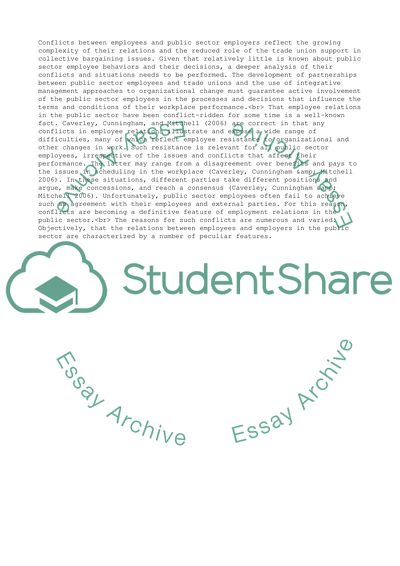Cite this document
(Employee Relations in the Public Sector: Conflicts and Implications Term Paper - 1, n.d.)
Employee Relations in the Public Sector: Conflicts and Implications Term Paper - 1. Retrieved from https://studentshare.org/management/1748033-employee-relations-in-the-public-sector-have-generally-been-conflict-ridden-for-some-time-discuss-the-reasons-for-this-and-what-the-implications-for-the-future-are
Employee Relations in the Public Sector: Conflicts and Implications Term Paper - 1. Retrieved from https://studentshare.org/management/1748033-employee-relations-in-the-public-sector-have-generally-been-conflict-ridden-for-some-time-discuss-the-reasons-for-this-and-what-the-implications-for-the-future-are
(Employee Relations in the Public Sector: Conflicts and Implications Term Paper - 1)
Employee Relations in the Public Sector: Conflicts and Implications Term Paper - 1. https://studentshare.org/management/1748033-employee-relations-in-the-public-sector-have-generally-been-conflict-ridden-for-some-time-discuss-the-reasons-for-this-and-what-the-implications-for-the-future-are.
Employee Relations in the Public Sector: Conflicts and Implications Term Paper - 1. https://studentshare.org/management/1748033-employee-relations-in-the-public-sector-have-generally-been-conflict-ridden-for-some-time-discuss-the-reasons-for-this-and-what-the-implications-for-the-future-are.
“Employee Relations in the Public Sector: Conflicts and Implications Term Paper - 1”, n.d. https://studentshare.org/management/1748033-employee-relations-in-the-public-sector-have-generally-been-conflict-ridden-for-some-time-discuss-the-reasons-for-this-and-what-the-implications-for-the-future-are.


